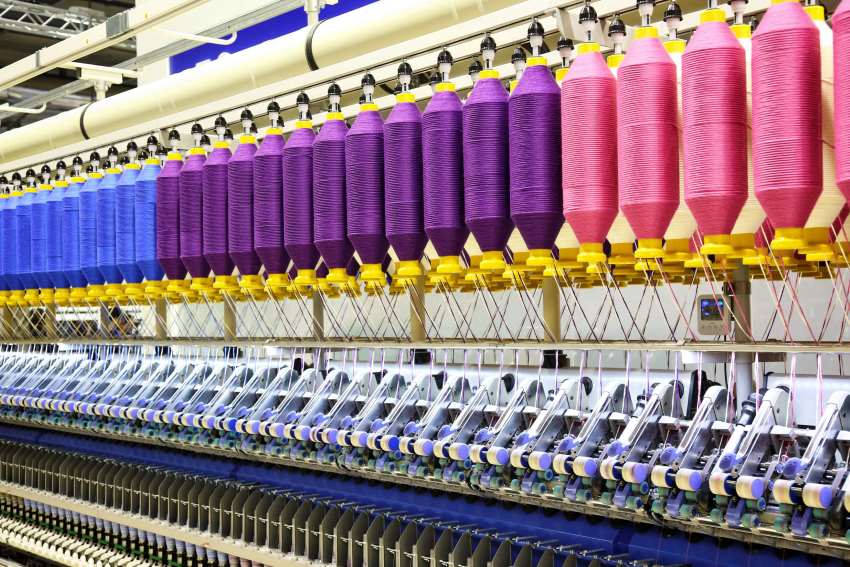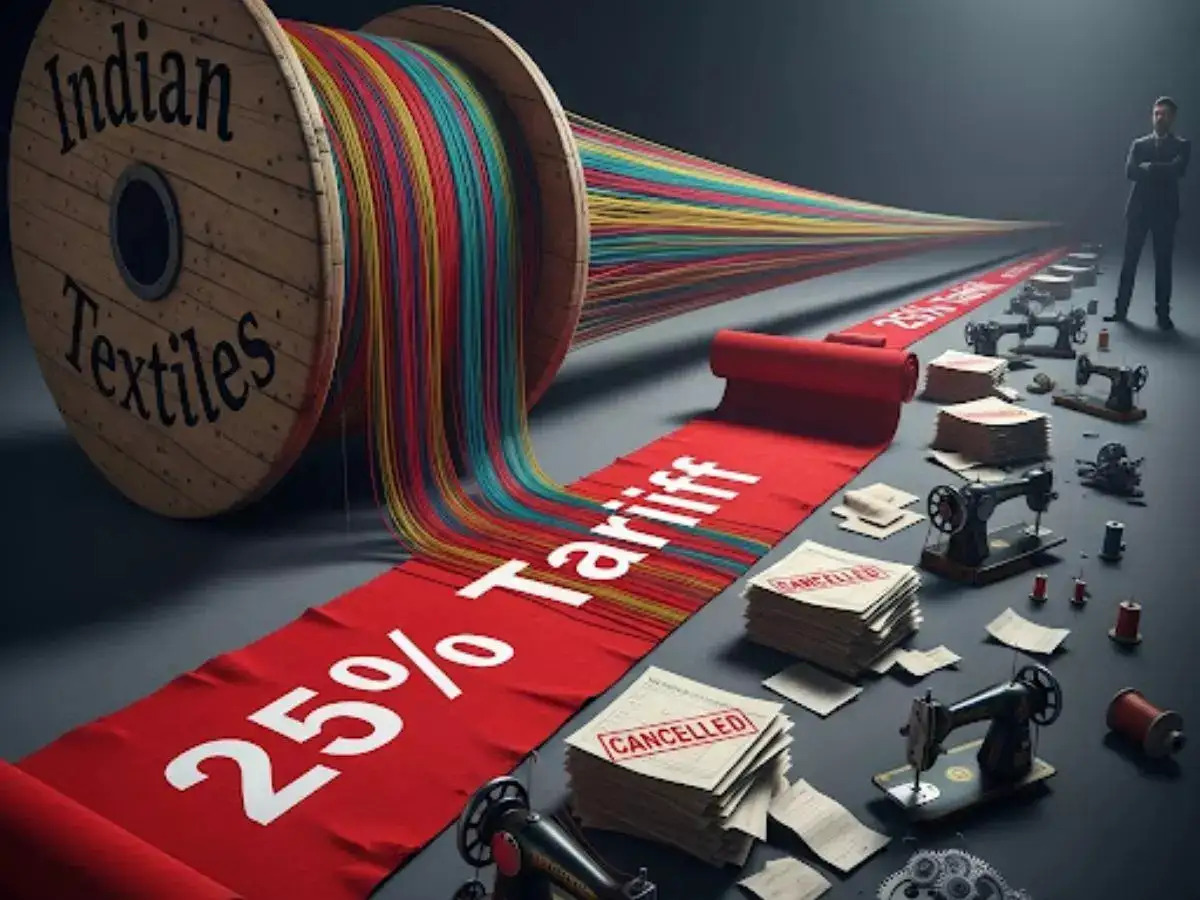
The global trade stage has seen a reset this August with escalating US tariffs, creating a high-stakes, three-way competition for South Asia's textile and apparel powerhouses. The US, citing a ‘reciprocal’ trade policy, has imposed varying and punitive tariffs that have upended long-standing export dynamics. This new reality pits Pakistan against Bangladesh in a battle for market share, while India, facing the steepest tariffs, scrambles to maintain its foothold in its most critical export market.
The new tariff regime and its immediate impact
As of August 2025, the US has imposed a multi-tiered tariff structure on major textile and apparel exporters. The core of this new policy includes a 19 per cent tariff on Pakistani goods, a 20 per cent tariff on Bangladeshi goods, and a devastating 25 per cent (with the potential to rise to 50 per cent) on Indian products. This is a major departure from previous trade arrangements and has created a direct, measurable impact on the export viability of each nation.
The tariffs immediately eroded Pakistan's comfortable lead over Bangladesh. The initial 5 per cent tariff advantage Pakistan held has now been whittled down to a razor-thin 1 per cent. While this 1 per cent margin still provides a competitive edge, it is a precarious one, especially against Bangladesh's massive, cost-efficient manufacturing base.
For India, the situation is far more dire. With a tariff rate of 25 per cent (and a potential increase to 50 per cent), Indian textiles and apparel are now at a severe disadvantage. Indian exports to the US fell for the fourth consecutive month in July 2025. This has placed India's annual $10 billion textile exports to the US at significant risk, creating a void that its South Asian rivals are eager to fill.
Table: US tariff rates and export competitiveness (August 2025)
|
Country |
US tariff rate (apparel & textiles) |
Competitive dynamics |
|
Pakistan |
19% |
Cautious advantage over Bangladesh; prime position to capture Indian market share. |
|
Bangladesh |
20% |
Narrow disadvantage to Pakistan, but with significant scale and cost advantages. |
|
India |
25% (potentially 50%) |
Severely disadvantaged; facing a significant erosion of market share. |
Bangladesh's cost and scale advantage vs. Pakistan's tariff edge
While Pakistan enjoys a slight tariff advantage, Bangladesh's textile industry is a formidable opponent. The Bangladeshi garment sector employs 4.1 million workers, nearly triple Pakistan's textile workforce. This massive scale allows for economies of scale in production and logistics. Furthermore, Bangladesh's manufacturing facilities benefit from at least 60 per cent lower power and gas tariffs compared to Pakistan, significantly reducing operational costs.
Bangladesh's established buyer relationships with major US fashion brands and its robust, high-volume manufacturing capabilities could easily overwhelm Pakistan's narrow price edge. Bangladeshi textile lobbies are also actively pressuring the government to negotiate even lower US tariff rates, a sign of their proactive and aggressive approach to market access.
Table: Pakistan vs. Bangladesh a comparison
|
Metric |
Pakistan |
Bangladesh |
|
Total Exports (All Sectors) |
$16 billion |
$47 billion (garments alone) |
|
Textile Workforce |
Approx. 1.4 million |
4.1 million |
|
Power & Gas Tariffs |
High |
At least 60% lower than Pakistan |
India's vulnerability and the hunt for new suppliers
India's punitive tariff rate has made it a less attractive sourcing destination for major US retailers. Major US buyers like Target and Walmart are reportedly re-evaluating their supplier relationships. This is a critical development, as these retailers are known for their ‘value-seeking consumer’ base, where price and efficiency are paramount. With India's tariffs slashing margins, the incentive to source from the country diminishes.
Pakistani manufacturers are already reporting an unprecedented increase in inquiries from US buyers, indicating that a shift in the supply chain is underway. This is a direct consequence of the six-point tariff advantage Pakistan holds over India. Indian suppliers, desperate to retain their US market share, are resorting to slashing prices and operating on razor-thin margins a strategy that is unsustainable in the long term.
The inter-regional supply chain dynamics
The tariff changes are also expected to reshape the textile supply chain within the South Asian region itself. The textile industry is a complex web of raw materials, fibers, yarn, and fabrics. Historically, intra-regional trade has been limited, with South Asia's intra-regional trade accounting for only about 5 per cent of its total merchandise trade. However, this may change.
With India's final products now subject to such high tariffs, Indian textile manufacturers might explore new strategies. This could include a shift towards exporting raw materials, fibers, or yarns to countries with more favorable tariff arrangements, such as Bangladesh and Pakistan. This is a ‘China Plus One’ strategy applied to the subcontinent.
Raw materials and yarns: Indian yarn and fabric producers, faced with a crippled finished-goods export market to the US, may find a new customer base in Bangladesh. The logic is that Bangladeshi garment factories, with their 20 per cent tariff rate and low operational costs, can import Indian raw materials and still produce a final product that is more competitive in the US market than an entirely Indian-made product. This would create a new, symbiotic relationship, where India supplies the inputs and Bangladesh provides the final, tariff-advantaged output.
Home textiles: The home textiles sector, which includes towels, bed linens, and upholstery, is also heavily impacted. India has a significant market share in this category, and the 25 per cent tariff will make Indian home textiles less competitive against those from Pakistan and even Vietnam. This will lead US buyers of home goods to actively seek out new suppliers. Pakistan, with its integrated textile industry from cotton to finished goods, is well-positioned to capitalize on this shift.
The Walmart and Target conundrum
The mention of US retailers like Target and Walmart reassessing their supplier relationships is a crucial element of this story. These companies operate on a model of providing ‘everyday low prices’, where any increase in sourcing costs due to tariffs is a direct hit to their profitability and their core value proposition to the consumer. A tariff hike of even a few percentage points can lead to a shift in a multi-billion dollar sourcing portfolio.
For these retailers, the new tariff structure provides a clear incentive to diversify away from India and increase their sourcing from Pakistan and Bangladesh.
Walmart had previously committed to sourcing $10 billion worth of goods from India by 2027. This ambitious goal now faces a headwind due to the new tariffs. While Walmart is known to work with a diverse network of suppliers, the 25 per cent tariff on Indian goods will undoubtedly force a re-evaluation of this commitment. It is highly likely that they will shift a portion of their textile and apparel orders to Pakistan and Bangladesh to mitigate the financial impact of the tariffs.
Target, a major player in home textiles, will be looking to its suppliers to absorb the cost of the tariffs or find alternative sourcing. Given the intense competition and thin margins in the home textiles sector, it is unlikely that Indian suppliers can bear the full weight of a 25 per cent tariff. This creates an immediate opportunity for Pakistani home textile manufacturers, who can offer a more competitive price point due to their lower tariff rate.
Thus the US's post-tariff trade scenario is not a static one. It is a, evolving situation where a slight tariff advantage, combined with a nation's existing manufacturing strengths, can lead to significant shifts in market share. While India faces an existential challenge to its US textile exports, Pakistan and Bangladesh are locked in a fierce, multi-faceted competition. The ripple effects will extend far beyond national borders, reshaping the very fabric of the South Asian textile supply chain.












